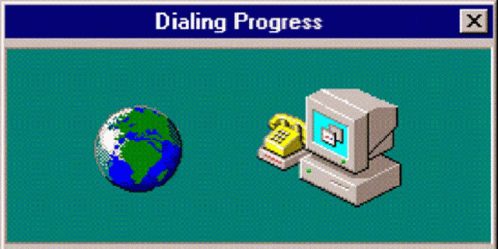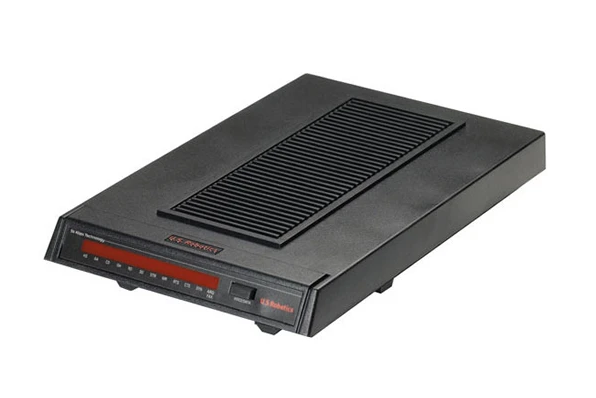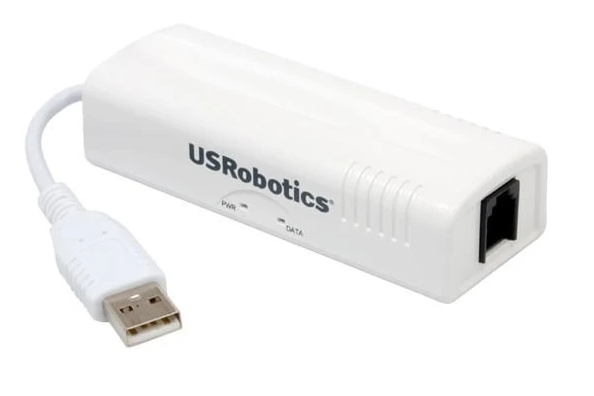Written 1 August 2024
Dial-Up at Home
Back when the Internet was new in people's houses, you called it on the phone like
a pizza delivery shop and, like some authentic Italian joints, it yelled back at you. With love.

I started collecting old palmtops/handheld PCs/ultra-light laptops/whatever devices because they're
a cool form factor. They all had a couple things in common:
No ethernet port
No Wi-Fi
Built-in modem OR a PCMCIA slot
Dial-up was the common denominator. Where I live, in theory, I can get a real phone. But reality
is that will cost a lot money for getting one device online at a near useless rate. Another reality
is that the modern Internet isn't friendly for such devices.
End Goal
Every good project has milestones and end states. This is not one of those. The milestones occurred
to me as I hit them because I don't know enough to figure out what a major accomplishment
is before it makes sense. Learning!.
In retrospect, here are the goals:
- Create a PBX that accepts SIP registrations from 2 phones
- Succesfully connect a phone call between 2 clients
- Add a modem to our "ISP" server and route traffic from it to the LAN/Internet
- Establish connection from client device to ISP modem
- Browse the Internet
- Create a dial pool and connect more than one device to our "ISP" at once
- *BONUS* Run a dial-in BBS, because that's cool as hell in a "I've never talked to a girl" kind of way
Technical Challenges
There are a number of technical challenges to this, chief of which is that protocols for
communicating on the Internet have evolved while all of my palmtops are locked in a much
simpler time. My earliest devices were lucky to even have a TCP/IP stack within Windows CE,
so HTTPS is out of the question. This is a hurdle many others have to contend with and there
are out of the box solutions that I'll cover later.
The next technical challenge: Interfacing a modem with my existing network. I already have a
POTS phone on the network, but its connected through a GrandStream ATA and direct dials an IP
and port. So, the next challenge was obtaining a modem that could talk the same language as my
my devices with built in modems. This was relatively brief, USRobotics gear is all over eBay,
including business class devices that used to be 4 figures of remote connectivity.
Modem to modem connections are imminently possible. In fact, you can do that with a a single, 2-port
ATA by having it simply direct dial the other port. But that's not dorky enough, I'm here for the real
deal of dialing through a PBX and getting transferred to another modem. Besides, buying a 2 port ATA
for every device I want online will somehow be pricier than what my stated end goal will be.
Non-Issues
This will be brief, because there were very few things that will not be an issue. First,
one friend of mine who is admittedly more radio oriented than computer expressed concerned
that these devices would be unwillingly violated by the Internet as soon as they were online.
Fair assumption, seeing as these devices are 20+ years old and don't even have a concept of
virus protection. So why is this a non-issue? Easy. The Internet generally doesn't have a concept
of the architectures on which these devices run. They are primarily SH3 CPUs, with a couple of ARM
and MIPS devices. This is a target pool so small, niche, and not critical to any infrastructure that
no credible threat would actually bother with it. I told my buddy that, should one of these devices
get compromised, I'd immediately turn it over to a museum as an heirloom, then track down the
perpetrator and buy them a beer.
And that's it. Everything else about this is a problem and not remotely worth your time.
Unless you're rad as hell like me.
Hardware
Ebay is one of the greatest ways to buy things you don't need at prices that let you think you're
still fiscaly responsible. Let's look at all the silly gear I bought and the relevant specs:
USRobotics Courier Business Modem
This modem was a heavy hitter back in the day, built for always connectivity to the home office,
as well as out of band control of assets.
General Specs
- ITU V.92/V.90 up to 56 Kbps downloads
- ITU V.34 at 33.6 Kbps or 28.8 Kbps
- Compatible with most ITU and Bell standards down to 300 bps
- Data Error Control; Compression: V.42/V.42bis and MNP2-4/5
- Hayes Compatible

USRobotics 56k USB Controller Dial-Up Modem
This is a relatively unique piece of kit in the list because it's the only USB hardare modem I
can find. This is important because while soft modems are fine for dialing-up, they're
nearly impossible to get working as the dial-in modem. The combination of USB and hardware modem
makes it uniquely suitable as an ISP modem under Linux. More on that later.
General Specs
- V.92, V.90, V.34, V.32bis, V.32, V.22bis, V.22, V.23, and V.21
- ITU-T V.253 Command Set
- Data Error Control/Compression: V.44/V.42/V42bis and MNP2-4/5
- Hayes Compatible

Software
And it's a hard


